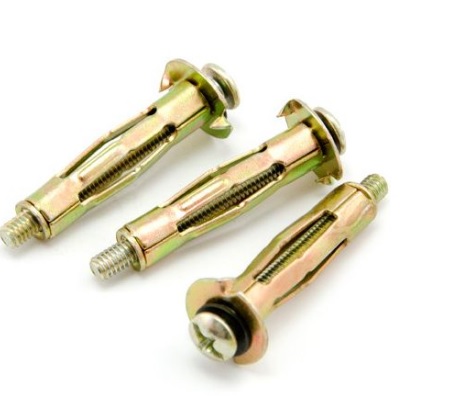- Home
- Blog
- Screws & Fixings
- Screw Anchors - What Are They and When Are They Used?
Screw Anchors - What Are They and When Are They Used?

There are occasions during a construction project when your screws need additional support in order to remain fixed in place. Screws are often used to attach things such as picture frames and shelves onto drywall or hollow brick - however, drywall can often be thin or is lacking in substantial depth. If this is the case, then the screw may end up dislodging and slipping out of place.
To prevent this from happening, many DIYers use screw anchors to counteract this. There are several types of screw anchors, each with a slightly different job, so ensure that the anchors you buy are correct for your particular project.
This article will explore exactly what a screw anchor is, the types you can find, and when you would most likely use them. It will also touch upon the most effective way to install a screw anchor.
What is a Screw Anchor?
Screw anchors, also known as wall plugs, are small pieces of hardware designed to solidify the attachment of objects onto walls. If you are not looking to hang something directly over a wall stud where a screw has plenty of material to bite into, you will need a screw anchor to ensure your wall hangings don't fall.
Screw anchors were invented in 1910 and are typically made from plastic, metal, or fibre. There are several different types of screw anchors available.
Concrete Screw Anchors
These screw anchors are most effective when attaching a cement board to wood or metal. They are often corrosion-resistant, thanks to their special coating.
Toggle Bolt Screw Anchors
Toggle bolts are the most effective type of screw anchor for hanging heavier items such as wall mounts for televisions. They come in two parts (the toggle and the bolt) and must be inserted into a pre-drilled hole. As with most screw anchors, they are totally removable.
Plastic or Metal Hollow Screw Anchors
These commonly found wall plugs are used for less strenuous installations as they won't have the strength for heavier items and hangings. Hollow wall anchors require a pilot hole first for the anchor to be placed in. They will then expand to the edge of the wall once the screw has been inserted.
Thread Forming Anchors
A thread-forming anchor is also known as a self-tapping anchor. They are designed with threads forming onto the anchor itself so that as they are drilled in, they will already be firmly embedded into the material before the screw is even in place. They are best suited for medium-weight purposes such as hanging shelves.
Sleeve Anchors
Sleeve anchors are among the strongest type of screw anchors you can find. These are best suited for jobs involving concrete, solid brick, and masonry and will most likely result in permanent anchoring. They are primarily used outdoors to attach things such as signs and heavy metal door frames.
Plastic Expansion Anchors
For those lightweight installations, plastic expansion anchors are often a good choice. They are not designed to help with heavy items and fixtures. As with most screw anchors, you will need an empty hole first for the anchor to slide into. These are generally a very affordable option.
Which Screw Anchor Should I Use?
With so many options to choose from, it can become a little confusing when deciding which type of screw anchor you will need.
You should consider several factors, with the main one being the type of object you're working with and how heavy it is. Not all anchors are designed for heavy installations. Most will come with a maximum weight limit on the packaging, so check this carefully.
Other considerations include the type of wall material the anchor will be inserted into, whether they require any specialist tools to help with the installation, and whether they will be required for overhead installations, as not all anchors are designed for these types of projects.
How Do I Install a Screw Anchor?
Installing a screw anchor is not a complex process, but it still requires care and attention, and there is still the potential for damage if you don't do things properly. You can install most screw anchors by following these steps:
- Mark your intended hanging point. If you know where your wall studs are, try to place the point over one of these, as there will be much more material for the screw to work with.
- You will then need a pilot hole. This should be made with a nail smaller than your anchor diameter, as your anchor will need to expand against the wall's interior to ensure it remains in place.
- Once you have your pilot hole, insert the anchor using a hammer. Once finished, the head of the screw anchor should be flush against the wall's exterior surface.
- Now that your anchor is in place, all that remains is to install the screw.
Final Thoughts
Screw anchors are often essential for many hanging installations. They provide critical support for screws when it comes to keeping things from falling off walls and can ensure that your walls remain damage-free.
At Trade Warehouse, you can find a wide range of screw anchor options on our website at highly competitive prices.
If you still require further guidance on which types of screws you will need for your project, check out our guide on fixing screws.

